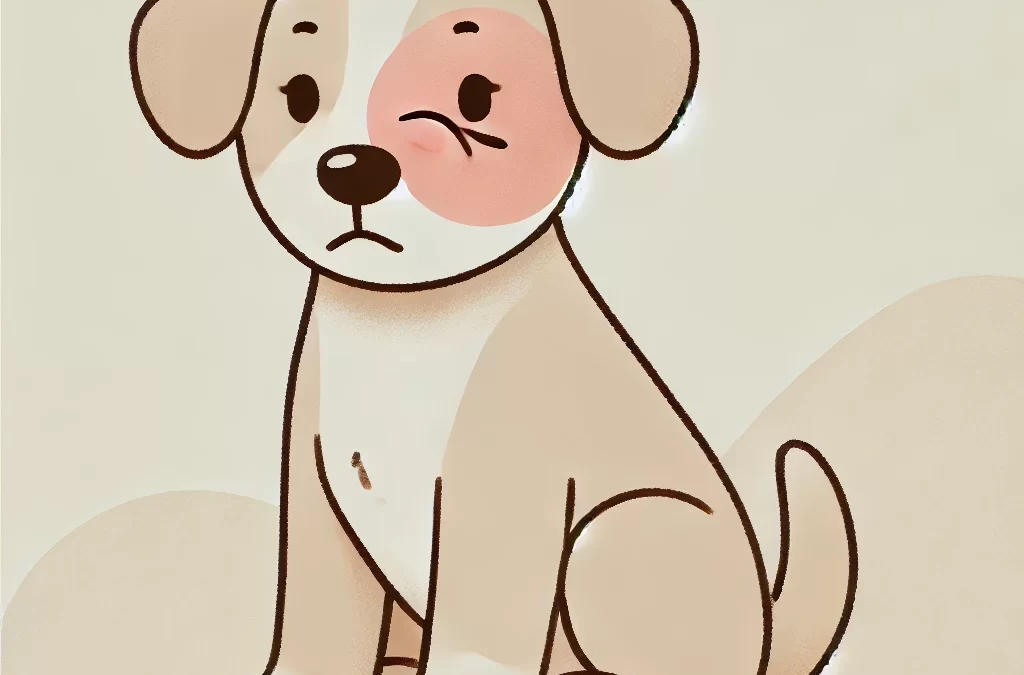
經過 TCMVET | 2024 年 12 月 22 日 | 狗癌症和腫瘤
貓的乳腺在貓科動物健康的討論中經常被忽視,但它在其生物學和福祉中發揮著至關重要的作用。雖然大多數貓主人都知道這些腺體對於哺乳小貓至關重要,但它們的重要性遠遠超出了哺乳範圍。本文深入探討了貓科動物乳房的迷人世界,探討了它們的解剖結構、功能和健康挑戰,同時提供了對其護理的獨特見解。
乳腺解剖學的奇蹟
與所有哺乳動物一樣,貓也擁有為幼崽產奶的乳腺。雌貓通常有四對腺體,沿著身體的下側排列成兩行。每個腺體包含:
- 小葉和導管:負責牛奶的生產和運輸。
- 奶頭(乳頭):乳汁的外部出口。
- 支持組織:包括提供結構的脂肪和結締組織。
乳腺對荷爾蒙有反應,懷孕、哺乳和某些健康狀況會引發變化。
不僅僅是牛奶:乳腺鮮為人知的作用
雖然乳房的主要功能是產奶,但它們對於發出貓的生殖和荷爾蒙狀態訊號也至關重要。例如:
- 荷爾蒙指標:熱循環期間的腫脹或敏感表示雌激素和黃體酮的活性。
- 壓力反應:這些腺體也會對壓力做出反應,有時會導致非哺乳期腫脹。
常見的乳房疾病:主人應該知道什麼
乳腺炎
乳腺炎是一種乳腺感染,通常發生在哺乳的貓身上。症狀包括發紅、腫脹和疼痛。在嚴重的情況下,可能會形成膿腫,需要獸醫幹預。
纖維瘤樣增生
這種良性但劇烈的腺體腫脹發生在年輕、未絕育的雌性或懷孕期間。雖然無害,但可能會引起不適並需要監測。
乳腺腫瘤
在最嚴重的疾病中,乳房腫瘤佔所有貓科動物癌症的 17%。與狗的許多腫瘤是良性的不同,貓乳腺腫瘤中有 85-90% 病例是惡性的,通常需要積極治療。
無聲的威脅:認識乳房腫瘤的早期跡象
乳腺腫瘤的早期發現對於成功治療至關重要。留意這些微妙的跡象:
- 乳腺附近有小而堅硬的腫塊。
- 乳房區域腫脹或不對稱。
- 從乳頭流出分泌物。
- 腺體上方皮膚潰瘍或發紅。
如果發現任何這些症狀,請立即尋求獸醫建議。
預防與照護:保護貓咪的健康
絕育事宜
在母貓第一次發情之前進行絕育可以大大降低乳腺腫瘤的風險。研究表明,早期絕育可降低風險高達 91%。
定期檢查
在日常梳理過程中,輕輕觸診貓咪的下側,檢查是否有腫塊或異常情況。早期介入可以挽救生命。
最佳營養
富含抗氧化劑和歐米茄脂肪酸的均衡飲食有助於整體健康,可能降低癌症風險。
壓力管理
最大限度地減少環境壓力,以防止荷爾蒙相關的腫脹和其他併發症。
最後的想法
貓的乳腺不僅僅是功能器官;它們是了解貓整體健康狀況的窗口。了解它們的解剖結構並監測潛在問題可以確保您的貓科動物朋友過著健康快樂的生活。早期發現、預防性照護和同情心的關注是保障貓咪健康這一重要面向的關鍵。

經過 TCMVET | 2024 年 12 月 22 日 | 狗癌症和腫瘤
決定對一隻患有癌症的心愛的狗實施安樂死是寵物主人可能面臨的最令人心碎的選擇之一。這是一個充滿愛、內疚以及我們與毛茸茸的伙伴之間不可動搖的紐帶的問題。雖然這個主題經常在臨床上討論,但讓我們從一個獨特的角度探討這個敏感問題——將實用性與情感洞察力相結合,幫助您基於同情和理解做出決定。
狗狗患癌症的現實
癌症影響了近一半 10 歲以上的狗,其症狀和進展因類型和階段的不同而有很大差異。雖然獸醫學的進步使得手術、化療和安寧療護等治療方法變得更容易取得,但這些選擇通常會帶來身體、情緒和經濟方面的挑戰。關鍵問題是:什麼時候才夠?
轉移焦點:生活品質與生活數量
安樂死的決定應該圍繞著狗的生活品質而不僅僅是延長它。狗的身體可能會忍受,但當痛苦變得難以承受時,他們的精神就會動搖。以下是評估的關鍵因素:
- 疼痛管理
儘管服用藥物,您的狗是否仍持續疼痛?他們是否難以進行基本活動,例如舒適地行走或躺下?
- 食慾和水分
即使給你的狗提供了他們最喜歡的食物,你的狗是否也停止進食或喝水?食慾下降通常表示身體正在停止運作。
- 能量水平
您的狗仍然喜歡它們曾經喜歡的活動嗎?慢性疲勞和不感興趣可能表示情緒和身體衰退。
- 社會參與
您的狗是否遠離您和其他寵物?陷入困境的狗經常孤立自己,避免接觸和關注。
- 衛生和流動性
他們無法控制排尿或排便嗎?移動或保持衛生困難可能會導致進一步的不適和痛苦。
情感代價:業主的沉默痛苦
照顧患有癌症的狗的過程可能會讓人精神疲憊。不眠之夜、持續的憂慮以及看著寵物衰弱的心痛都會造成損失。請記住,這個決定不僅關係到您的狗的痛苦,還關係到您在不損害您的健康的情況下提供護理的能力。
決策架構:HHHHHMM 量表
獸醫專業人士經常使用 HHHHHMM 量表(傷害、飢餓、補水、衛生、幸福、行動力以及好日子多於壞日子)作為評估生活品質的實用工具。對每個類別進行評分可以幫助您做出客觀的評估。
獨特的觀點:在準備告別的同時慶祝生命
安樂死不僅僅是結束——它還是一個給你的狗一個平靜、無痛苦的告別的機會。以下是如何讓這轉變變得有意義:
- 創建遺願清單
計劃你的狗仍然喜歡的活動,即使它們很簡單,例如坐在陽光下或吃特殊的食物。
- 捕捉回憶
透過照片或影片記錄這些珍貴的時刻,慶祝您的狗的生命和愛。
- 讓您的獸醫參與
與您的獸醫密切合作,了解您的狗的預後並討論臨終選擇,包括在熟悉且舒適的環境中進行家庭安樂死。
- 依賴支持網絡
與朋友、家人或線上社群聯繫,了解失去寵物的悲痛。
後果:尋找平靜和目標
狗的去世留下的空虛感覺是難以克服的。為了緩解這種悲傷:
- 紀念他們:製作紀念品,例如爪印或記憶盒。
- 傳遞你的愛:考慮在動物收容所當志工或寄養有需要的狗。
- 給自己一點時間: 治癒需要耐心。讓自己悲傷而不加以評斷。
最後的想法:愛的終極行為
決定何時對患有癌症的狗進行安樂死並不是放棄,而是要認識到戰鬥何時變得不公平。這是一種勇氣和無條件的愛的行為,讓您的狗有尊嚴、平靜地離開這個世界。
當您面臨這個決定時,請記住:您的狗的一生充滿了您的關懷,它們的去世將充滿您的同情心。

經過 TCMVET | 2024 年 12 月 21 日 | 狗癌症和腫瘤
當您發現狗的皮膚上有腫塊時,可能會引起警惕。對於許多寵物主人來說,第一個想法可能是“這是癌症嗎?”或“如果事情很嚴重怎麼辦?”狗出現此類腫塊的一個常見罪魁禍首是 脂肪瘤,可以出現在身體上的良性脂肪瘤。但它們危險嗎?讓我們來探討一下狗狗脂肪瘤的事實、誤解和細微差別。
脂肪瘤到底是什麼?
脂肪瘤是一種在皮膚下生長的柔軟、橡膠狀的生長物。它們由脂肪細胞組成,當您輕輕觸摸它們時,它們通常會感覺可以移動。它們的大小和位置可能有所不同,但大多數脂肪瘤是無害的。雖然這些脂肪瘤通常是非癌性的,但考慮到它們神秘的外觀,它們給寵物主人帶來的不確定性是可以理解的。
好消息:脂肪瘤通常是良性的
好消息是,脂肪瘤幾乎都是良性的,這意味著它們不會癌症。大多數狗一生中會長一到兩個脂肪瘤,通常隨著年齡的增長。這些腫瘤往往生長緩慢,通常不會引起疼痛。大多數脂肪瘤不會擴散到身體的其他部位,因此不會威脅狗狗的整體健康。
脂肪瘤什麼時候會出現問題?
雖然大多數脂肪瘤是良性的,但如果它們長得足夠大或位於敏感區域,有些可能會引起併發症。以下是脂肪瘤可能造成問題的一些情況:
- 對周圍組織的壓力:如果脂肪瘤長得太大,它可能會開始壓迫肌肉、神經或其他重要結構。這可能會導致不適、疼痛或移動困難。
- 幹擾運動:位於腿部或關節附近的脂肪瘤會限制您的狗的活動能力。它們可能會產生沉重感或限制運動,導致跛行或步態改變。
- 惡性風險:雖然罕見,但有些脂肪瘤可能會轉變為 脂肪肉瘤,一種惡性癌症。這些不太常見,但更具攻擊性。如果脂肪瘤變得異常堅硬、生長迅速或出現疼痛跡象,則風險會更高。
您如何知道您的狗的脂肪瘤是否需要關注?
雖然大多數脂肪瘤是無害的,但定期監測至關重要。如果您發現以下任何情況,就該諮詢獸醫了:
- 快速成長:尺寸突然增加可能表示有問題。
- 疼痛或敏感:如果您的狗似乎受到脂肪瘤的困擾,則可能需要注意。
- 質地的變化:脂肪瘤變硬或變緊可能是一個危險信號。
- 新腫塊:如果您的狗在短時間內出現多個腫塊,建議去看獸醫。
治療選擇:去除還是不去除?
在大多數情況下,脂肪瘤不需要任何治療。如果脂肪瘤沒有引起任何疼痛或困難,您的獸醫可能會建議簡單地監測腫塊。然而,如果脂肪瘤因大小、位置或生長速度而出現問題,可能會建議手術切除。這通常是一個簡單的程序,但像所有手術一樣,它也存在一些風險,特別是對於老年犬。
預防脂肪瘤:可以做到嗎?
不幸的是,脂肪瘤主要是遺傳性的,沒有萬無一失的方法可以阻止它們的形成。然而,透過均衡飲食和定期運動來維持狗狗健康的體重可能會降低罹患大脂肪瘤的風險。肥胖往往會加劇脂肪瘤的生長,因此控制狗的體重始終是一個很好的預防措施。
最後的想法:脂肪瘤不是敵人
雖然脂肪瘤一開始聽起來很可怕,但它們往往更多的是令人討厭而不是危險。在大多數情況下,它們是良性的且易於管理。透過保持警惕並定期諮詢獸醫,您可以確保您的狗保持舒適和健康,無論一路上有任何腫塊和顛簸。因此,雖然脂肪瘤可能令人擔憂,但請記住,它們很少引起恐慌。

經過 TCMVET | 2024 年 12 月 21 日 | 狗癌症和腫瘤
狗的鼻竇癌是一種罕見但嚴重的疾病,會影響鼻竇和周圍組織。鼻竇是位於頭骨內充滿空氣的空間,儘管這些區域的癌症並不常見,但它仍然可能發生在狗身上。本文將探討狗鼻竇癌的原因、症狀、診斷和治療方案,為關心狗狗健康的寵物主人提供有用的資訊。
什麼是狗的鼻竇癌?
鼻竇癌是指鼻竇腔內生長的惡性腫瘤。鼻竇負責產生黏液並濕潤狗狗呼吸的空氣。當癌症在這些區域發生時,可能會導致一系列健康問題,這取決於腫瘤的位置和嚴重程度。鼻竇癌可以是原發性的,由鼻竇組織本身引起,也可以是繼發性的,這意味著它們已經從身體的其他部位擴散,例如鼻腔或口腔。
狗最常見的鼻竇癌類型是 腺癌,這是一種腺組織癌。其他類型可能包括 鱗狀細胞癌 和 纖維肉瘤,每個都有不同的生長模式和治療反應。
原因和風險因素
狗鼻竇癌的確切原因尚不完全清楚,但有幾個因素可能導致其發生:
- Genetics:某些品種可能容易罹患癌症,包括鼻竇區域的癌症。某些鼻子較長的品種,如杜賓犬、德國牧羊犬和拳師犬,可能面臨更高的風險。
- 環境因素:一般來說,接觸毒素、化學物質和污染物會增加罹癌的風險。生活在污染地區或接觸二手菸的狗可能更容易受到影響。
- 年齡:年齡較大的狗更有可能患上各種形式的癌症,包括鼻竇癌。這是由於細胞損傷隨著時間的推移而累積的影響。
- 慢性發炎或感染:患有長期鼻竇感染或鼻部問題的狗可能會增加在鼻竇腔中發生腫瘤的風險。
狗鼻竇癌的症狀
鼻竇癌的症狀可能很微妙,很容易被誤認為是其他疾病,這往往會導致診斷延遲。狗鼻竇癌的一些常見症狀包括:
- 鼻涕:持續或血性鼻水是鼻竇癌最常見的症狀之一。
- 臉部腫脹或畸形:臉部、眼睛或鼻子周圍明顯腫脹可能表示鼻竇內有腫瘤生長。
- 呼吸困難:腫瘤可能會阻塞正常氣流,導致呼吸困難或呼吸吵雜。
- 打噴嚏或咳嗽:持續打噴嚏或咳嗽可能是鼻竇腔受到刺激的跡象。
- 食慾減退或體重減輕:與許多癌症一樣,患有鼻竇癌的狗可能會失去食慾並隨後體重減輕。
- 眼睛問題:鼻竇附近的腫瘤會壓迫眼睛,導致視力改變或眼睛凸出。
- 昏睡:患有鼻竇癌的狗可能會表現出疲勞或虛弱的跡象。
由於這些症狀與許多其他疾病重疊,因此寵物主人諮詢獸醫以獲得準確的診斷非常重要。
診斷狗的鼻竇癌
診斷犬鼻竇癌通常需要結合臨床檢查、影像學檢查和活檢。該過程可能包括:
- 體檢:獸醫將進行徹底檢查,尋找鼻分泌物、腫脹或疼痛的跡象。
- 影像學:X 光、CT 掃描或 MRI 可以幫助觀察鼻竇、檢測任何異常生長並確定癌症的範圍。
- 活檢:可以從可疑腫瘤中採集組織樣本以確認診斷並確定癌症類型。
- Blood Tests:可以進行血液檢查來評估狗的整體健康狀況,並尋找可能與癌症相關的感染或器官功能障礙的跡象。
狗鼻竇癌的治療選擇
犬鼻竇癌的治療取決於癌症的類型、部位和階段,以及犬隻的整體健康狀況。主要治療方案是:
- 手術:如果腫瘤是局部的且可觸及,可能會建議手術切除癌性生長。然而,由於鼻竇周圍的結構脆弱,手術可能具有挑戰性,並且可能無法在所有情況下進行。
- 放射治療:對於無法手術切除的腫瘤或無法進行手術時,可以使用放射治療。這種治療旨在透過高能量輻射靶向癌細胞來縮小腫瘤並減輕症狀。
- 化療:化療有時與放射治療或手術結合使用,特別是當癌症擴散到鼻竇以外。目標是殺死癌細胞或阻止它們進一步生長。
- 安寧療護:如果癌症已發展到晚期或無法進行手術,可以提供安寧療護來控制症狀並改善狗的生活品質。可能會開立疼痛管理、抗發炎藥物和其他支持性治療方法。
- 免疫療法:一種較新的方法,免疫療法涉及使用藥物來幫助狗的免疫系統識別和攻擊癌細胞。這種療法仍處於實驗階段,但對某些類型的癌症有希望。
預後
患有鼻竇癌的狗的預後很大程度上取決於癌症的類型、診斷的早期程度以及對治療的反應。如果腫瘤早期診斷並且可以手術切除,預後會相當良好。然而,由於某些鼻竇癌的侵襲性,其存活率可能會有所不同,有些狗的預後可能較差。
即使經過治療,鼻竇癌也可能復發,因此需要持續監測以檢查復發跡象。定期與獸醫進行追蹤對於控制這種疾病至關重要。
結論
雖然狗的鼻竇癌相對罕見,但這是一種嚴重的疾病,需要立即得到獸醫的關注。這些症狀通常與較不嚴重的疾病相似,因此早期發現具有挑戰性。如果您發現狗有任何鼻部問題、臉部腫脹或行為變化的跡象,請務必盡快諮詢您的獸醫。透過正確的診斷和治療,許多患有鼻竇癌的狗可以過著舒適的生活,獸醫學的進步不斷改善治療選擇和結果。

經過 TCMVET | 2024 年 12 月 20 日 | 狗癌症和腫瘤
當我們想到狗的癌症時,常常會想到淋巴瘤或肥大細胞瘤等疾病。然而,鼻竇腫瘤雖然不太常見,但同樣陰險且具有挑戰性。這些腫瘤會影響鼻腔和周圍的鼻竇區域,通常會出現微妙的症狀,直到進展時才會被注意到。本文探討了犬鼻竇腫瘤的獨特挑戰、其原因、症狀和創新的護理方法。
什麼是鼻竇腫瘤?
鼻竇腫瘤是狗鼻腔或鼻竇通道的異常生長。它們可以是良性(非癌性)或惡性(癌性),後者更為常見。鼻腺癌、鱗狀細胞癌和纖維肉瘤是最常診斷的類型。這些腫瘤會阻礙氣流,導致臉部畸形,在嚴重的情況下,會擴散到身體的其他部位。
為什麼狗狗會罹患鼻竇腫瘤?
- 環境觸發因素
接觸香菸煙霧、工業煙霧甚至家用化學品等污染物可能會增加狗狗鼻腫瘤的風險。長鼻子的狗(長頭品種,如牧羊犬或灰狗)特別容易受到影響,可能是因為它們的鼻表面積較大,容易接觸到空氣中的毒素。
- 遺傳因素
雖然鼻竇腫瘤可能影響任何狗,但某些品種和遺傳傾向可能會增加風險。狗的血統中的癌症史也可能導致脆弱性。
- 慢性感染或炎症
患有反覆鼻部感染或發炎的狗可能會經歷細胞變化,隨著時間的推移會增加腫瘤發生的風險。
症狀:要注意什麼
鼻竇腫瘤因其隱密性而臭名昭著。早期症狀通常類似過敏或輕度呼吸道感染等良性病症。以下是需要注意的主要症狀:
- 持續鼻涕: 通常是一側的並且可能含有血液。
- 打噴嚏: 慢性且有時暴力。
- 臉部腫脹或畸形: 尤其是眼睛或鼻子周圍。
- 呼吸困難: 因鼻塞而打鼾或呼吸困難。
- Behavioral Changes: 嗜睡或對玩耍、食物或社交互動的興趣降低。
診斷:揭開隱藏的威脅
檢測鼻竇腫瘤需要先進的診斷技術。獸醫檢查可能包括:
- 鼻鏡檢查: 使用相機檢查鼻腔。
- CT 掃描或 MRI: 確定腫瘤的大小以及是否已擴散。
- 切片檢查: 提取組織樣本進行實驗室分析。
早期發現至關重要,因為在腫瘤的初始階段發現腫瘤時,治療效果會顯著改善。
治療:複雜病症的創新解決方案
- 放射治療
放射線通常是鼻竇腫瘤的主要治療方法,它以癌細胞為目標,同時不傷害周圍組織。先進放射治療 (IMRT) 等先進技術可以提高精確度和治療效果。
- 手術治療
在某些情況下,手術可能是切除腫瘤的選擇。然而,由於鼻腔的複雜解剖結構,這通常具有挑戰性。
- 化療
作為補充治療,化療可能有助於控制侵襲性腫瘤的擴散。
- Holistic and Supportive Care
針灸、草藥和飲食調整等替代療法可以在治療期間支持狗的免疫系統和整體健康。
預防和早期介入:採取的步驟
- 盡量減少毒素暴露: 使用對寵物安全的清潔產品,並避免在寵物周圍吸煙。
- 定期去看獸醫: 定期檢查有助於及早發現異常。
- 對症狀保持警覺: 不要將慢性打噴嚏或流鼻水視為「只是過敏」。
充滿希望的前景
雖然狗的鼻竇腫瘤是一種嚴重的疾病,但獸醫的進步帶來了希望。從早期檢測到尖端治療,一切努力都可以延長狗的生活品質。作為寵物父母,保持知情並積極主動是應對這一具有挑戰性的診斷的最佳方法。
透過提高意識和倡導預防措施,我們可以為毛茸茸的同伴提供他們應有的照顧和安慰。

經過 TCMVET | 2024 年 12 月 20 日 | 狗癌症和腫瘤
狗的癌症長期以來一直是寵物主人關注的話題。雖然面對這種診斷時感到不知所措是很自然的,但了解原因可以為預防和護理提供見解。本文深入探討了狗狗罹患癌症的潛在原因,並揭示了遺傳、環境和生活方式因素。
遺傳傾向:沉默的驅動力
狗狗患癌症的主要原因之一是遺傳。由於遺傳特徵,某些品種更容易患癌症。例如,眾所周知,金毛獵犬、拳師犬和羅威納犬患淋巴瘤和骨肉瘤等癌症的可能性較高。這種遺傳傾向凸顯了負責任的育種實踐對於最大限度地降低風險的重要性。
環境毒素:看不見的威脅
狗狗經常接觸環境毒素,而主人卻沒有意識到。殺蟲劑、除草劑、二手煙,甚至家用清潔產品都可能導致癌症的發生。長期接觸這些有害物質會引發細胞突變,最終導致腫瘤生長。
飲食與肥胖:增加風險
缺乏必需營養素或大量加工食品的不良飲食會削弱狗的免疫系統,使它們更容易患癌症。肥胖會在體內產生發炎環境,使問題更加複雜。保持富含抗氧化劑的均衡飲食並避免過量餵食可以顯著降低風險。
老化:自然因素
隨著狗年齡的增長,它們的細胞會受到磨損,從而增加患癌症的可能性。年長的狗通常會經歷免疫功能下降,這使得異常細胞不受控制地增殖。這使得定期獸醫檢查對於早期發現和介入至關重要。
過度接種疫苗和醫療因素
一些研究表明,過度接種疫苗或不必要的醫療程序可能會增加癌症風險。雖然疫苗對於預防疾病至關重要,但過度或不合時宜的疫苗接種可能會對狗的免疫系統造成壓力。請務必諮詢值得信賴的獸醫,以製定適合您的狗的需求的疫苗接種計劃。
陽光照射和紫外線損傷
對於淺色皮毛或薄毛的狗來說,過度日曬會導致皮膚癌,特別是在色素沉著很少的區域。使用寵物安全的防曬霜來保護您的狗或在陽光高峰時段限制戶外活動會有所幫助。
如何最大限度地降低風險
- 均衡營養: 提供適合您的狗的年齡、品種和活動水平的高品質飲食。包括天然來源的抗氧化劑,如藍莓和胡蘿蔔。
- 限制毒素暴露: 使用對寵物安全的清潔產品,並避免讓您的狗接觸殺蟲劑或菸草煙霧。
- 規律運動: 透過定期的體育活動保持健康的體重。
- 常規獸醫就診: 安排年度檢查和篩檢,以便及早發現潛在的健康問題。
- 量身訂做的疫苗接種計畫: 與您的獸醫合作制定適合您的狗的生活方式和健康狀況的疫苗接種計劃。
結束語
狗的癌症是一種複雜的疾病,受遺傳、環境和生活方式因素的綜合影響。雖然不可能消除所有風險,但採取積極主動的措施可以顯著降低罹癌的可能性。透過保持資訊靈通和細心,寵物主人可以為他們的毛茸茸的同伴提供最好的照顧和生活品質。






